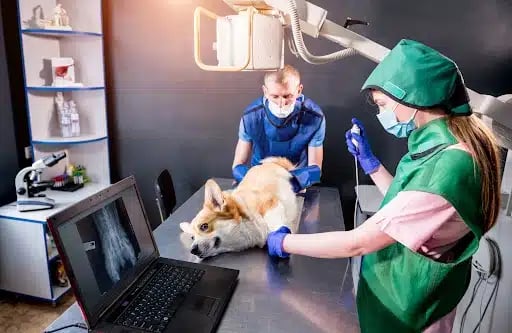Things to Consider When Choosing Veterinary X-Ray Equipment
Choosing the right veterinary X-ray equipment is crucial for providing high-quality care to animals. This blog outlines key factors to consider, including image quality, ease of use, durability, versatility, and cost. Learn how to select the best X-ray machine that fits your clinic’s needs, enhances diagnostic accuracy, and improves patient care. Whether you're upgrading your current system or purchasing for the first time, this guide helps ensure you make an informed decision for your veterinary practice.
Things to Consider When Choosing Veterinary X-Ray Equipment
2/18/20254 min read


Author: X-Ray Bazar Team
Published: February 17, 2025
Reading time: 5 minutes
When it comes to veterinary care, providing high-quality medical imaging is crucial for accurate diagnoses and effective treatment. However, choosing the right veterinary X-ray equipment is not a one-size-fits-all decision. Different animal species require different approaches, and veterinary clinics must prioritize both efficiency and animal comfort. The right imaging solution can make a significant difference in treatment outcomes, workflow, and overall patient care.
In this blog, we’ll walk you through the key considerations when purchasing veterinary X-ray equipment, ensuring your clinic has the right tools to provide top-notch care for your patients.
1. Image Quality:
First and foremost, image quality should never be compromised. Clear, high-resolution X-ray images are critical for accurately identifying fractures, tumors, infections, and other conditions. Better imaging not only improves diagnosis but also helps avoid unnecessary retakes, which reduces radiation exposure and enhances efficiency.
High-quality images allow for quicker, more accurate diagnoses, ultimately leading to better treatment outcomes for your animal patients.
2. Ease of Use:
Veterinary clinics often operate at a fast pace, so it’s essential to have X-ray equipment that’s user-friendly and easy to operate. Ease of use directly impacts workflow and minimizes any potential delays in patient care. The easier the equipment is to use, the faster your staff can adapt to it, resulting in a smoother transition and minimal downtime.
Make sure to consider whether the X-ray machine comes with installation and training. Well-supported training helps your team become proficient with the equipment, which enhances its effectiveness and reduces the risk of errors.
3. Durability and Reliability:
Veterinary X-ray machines often experience frequent and sometimes rough usage, so durability is key. Investing in reliable equipment that maintains its accuracy over time is crucial for continuous, high-quality care. Durable machines require fewer repairs and replacements, ultimately saving your clinic money.
Look for machines known for their long lifespan and robust build. Quality equipment will pay off in the long term through reliable service and consistent performance.
4. Warranty and Service Plans:
Even the most durable equipment requires maintenance, so ensure your X-ray machine comes with a comprehensive warranty and service plan. Preventative care, regular maintenance, and support plans help extend the lifespan of your equipment while ensuring it's operating at peak efficiency.
Don’t forget to inquire about post-purchase services such as routine inspections, repairs, and software updates to guarantee that your equipment remains in top condition for years to come.
5. Versatility:
Veterinary clinics treat a variety of animals, from small pets to large farm animals, so it’s essential that your X-ray equipment is versatile. Choose machines that can handle a wide range of species and conditions, allowing you to expand your services without the need for additional machines.
Look for multi-purpose equipment that integrates seamlessly with your clinic’s existing systems and enhances diagnostic capabilities across different fields of care, including orthopedic, neurological, and respiratory treatments.
6. Compatibility:
Make sure that the veterinary X-ray equipment you’re considering is compatible with your existing software and other medical equipment. Smooth integration is essential for improving the workflow and avoiding technical hiccups.
It’s also important to check that the equipment complies with relevant regulatory standards. Early communication with your IT and compliance teams can ensure everything aligns with industry requirements, ensuring smooth installation and use.
7. Portability:
For veterinarians who frequently treat animals on farms or at homes, having portable X-ray equipment can be a game-changer. Portable X-ray machines make it easy to provide diagnostics without the need to transport large animals to the clinic. This can significantly reduce the stress on animals and their owners.
Additionally, portable equipment enhances efficiency by allowing in-room diagnostics, which eliminates the need for animal relocation and helps to lower sedation or anesthesia requirements.
8. Cost Considerations:
Like any major purchase, cost is an important factor in your decision-making process. When evaluating potential X-ray machines, consider not only the initial purchase price but also the cost of maintenance and operation over time. Look at vendor quotes, including all service costs, warranties, and installation fees, to get a comprehensive understanding of the total investment.
Be sure to base your purchase decision on realistic financial projections, and consider whether financing options might help ease the burden of a large upfront payment.
9. Financing Options:
Many veterinary clinics explore financing options when purchasing new equipment. Options like leasing allow you to spread out the cost over time while maintaining flexibility for future upgrades. Traditional loans or manufacturer financing can also provide capital for outright purchases. If cash flow is a concern, these options might ease the burden of upfront costs.
Look into grants and funding programs that may be available, especially for practices in underserved or rural areas. Some vendors also offer trade-in programs, allowing you to offset costs by providing credit for older equipment.
10. Making the Right Choice for Your Clinic:
Choosing the right veterinary X-ray equipment is an investment that will impact the long-term success of your practice. With the right equipment, you’ll improve diagnosis accuracy, streamline workflows, reduce stress for both pets and owners, and ultimately provide better care.
At X-Ray Bazar, we understand that every veterinary clinic has its own unique needs. That’s why we offer a wide selection of high-quality, affordable veterinary X-ray solutions tailored to your specific requirements.
For more information or assistance in selecting the best equipment for your clinic, contact X-Ray Bazar today. We’re here to help you enhance your practice with reliable, cost-effective imaging solutions.


Reference Website Link:
American Veterinary Medical Association (AVMA)
https://www.avma.orgVeterinary Radiology & Ultrasound (Journal)
https://www.wiley.com/en-us/Veterinary+Radiology+%26+Ultrasound-p-9780781791703Veterinary Practice News – Imaging and Diagnostics
https://www.veterinarypracticenews.comVet-Tech Services - X-Ray Equipment
https://www.vettechservices.com/DVM360 – Veterinary Imaging
https://www.dvm360.com
Innovative
Contact Us
Service
xraybazar.com
© 2024. All rights reserved.
Address- Rajasthan, India
Gmail Id- xraybazaroffcial.com
Important Links
